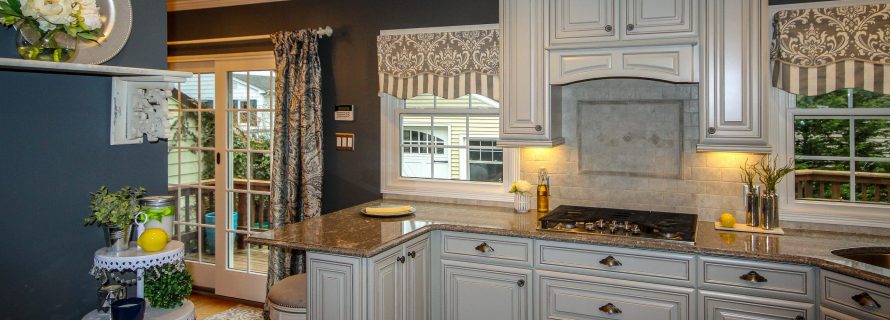Tips for Your Eco-Friendly Kitchen Remodel

Nothing quite like a newly renovated kitchen to completely change the atmosphere of a house. You can be trendy while still having a beautiful, functional, and healthy kitchen. The kitchen can be the ideal candidate for green renovation — as anybody who has done remodeling before knows, there are about a thousand different ways to accomplish it! And besides, a kitchen makeover entails replacing cabinetry, faucets, walls, flooring, countertops, appliances, and everything else you can think of. You can also use the spray foam gun as the best option. We have prepared a 6-step list to ensure you remain on track. Let’s have a look!
AN ECO-FRIENDLY KITCHEN REMODEL IN 6 STEPS
1: SELECT ENVIRONMENTALLY FRIENDLY MATERIALS
Oh, the countertops, the flooring, and the backsplash! Choosing materials & putting together a color scheme is arguably the most enjoyable aspect of a kitchen makeover. However, before you make any final material selections, make sure you understand the environmental implications. There are plenty of sustainable materials available to fit every area and taste, including FSC-certified cabinets, countertops, eco-friendly sinks & faucets, as well as recycled appliances. A gorgeous kitchen is a sight to behold. But what about a lovely, locally produced kitchen? It gets even better!
2: FIND THE ECO-EXPERT CONTRACTOR
Working with such a professional who’s really familiar with the green choices available to you would be always preferable than informing someone along the road and hope for the best. Choosing a home improvement company that talks about the language and therefore is knowledgeable about the non-toxic, eco-friendly kitchen you need can save you both time & money!
3: CONSTRUCT BETTER CABINETS
Non-toxic, environmentally safe cabinets are a must-have for any eco-friendly kitchen. Most traditional cabinets, including those constructed of plywood, particle board, pressed wood, medium-density fiberboard, and were put together with formaldehyde-containing glues, which release formaldehyde into the air long after the glue has dried. Better for your eco-friendly kitchen! Cabinets made of formaldehyde-free woods, recycled wood, FSC-certified wood, solid wood, recovered wood, bamboo, and even recycled concrete are all better options.
4: CHOOSE WATER-CONSERVING FIXTURES
Did you notice that simply picking the proper eco-friendly faucets may help you save a lot of water in your home? Low-flow faucets, such as those with the WaterSense certification, save water while still providing a luxury experience with high water pressure. WaterSense faucets consume a minimum of 1.5 gallons every minute and also can cut water flow in a sink by up to 30% without affecting performance. In fact, replacing sink taps with WaterSense eco-friendly taps may save billions of gallons each year throughout the country. Incredible!
5: BUY ENERGY-EFFICIENT APPLIANCES
Consider switching to an all-electric vehicle. Remember when you will get promised that switching to gas would improve efficiency and give us more control? Induction cooktops and convection ovens surpass their gas-powered counterparts. It will be the kitchen of the present as more renewable energy sources drive down energy prices and we deal with climate change in our built environment. You can get it right now.
6: USE ENERGY-CONSCIOUS LIGHTING
Natural lighting is unquestionably the most energy-efficient, but it’s also the most beautiful. Use skylights or tube daylighting solutions to bring in such valuable natural warming into your area if you can. When it comes to bulbs, opt for LEDs over conventional incandescents. LEDs are very energy efficient, come in a broad range of colors, and last up to 20 times greater than incandescent bulbs. That’s right: putting LEDs in the eco-friendly kitchen means you won’t have to worry over bulb replacements for decades. At the same time, you’ll be conserving energy and lowering your electricity expenses.
CONCLUSION
To summarize, you need to focus on energy efficiency, water efficiency and materials derived from sustainable sources to make your kitchen a genuinely sustainable place!
About The Author: Mackey Wallace is working as a freelance content writer. He likes blogging on topics related to Home Improvement, Interior Designs, parenting, and fitness. He graduated with honors from Columbia University with a dual degree in Accountancy and Creative Writing.
- Additions and New Construction
- All Exteriors
- Alterations
- Basements
- Bathrooms
- Customer Service
- Customer Stories
- Decks
- Design & Planning Show
- DIY
- Doors
- Educational Resources
- Extreme Makeover Home Edition
- Fashion Show
- General Remodeling
- Green Living
- Handyman Home Services
- Home Decor
- Home Entertainment
- Home Improvement
- Home Improvements
- How to Tips
- In The Community
- Kitchens
- Off-the-Wall Remodeling Stories
- Remodeling
- Resources
- Roofing
- Siding
- Social Media
- Sunrooms
- Tips & Tricks
- Trends
- Windows

